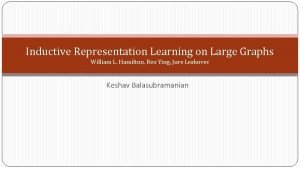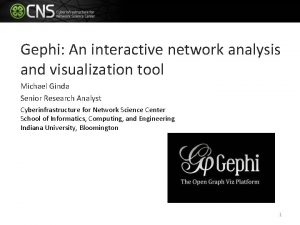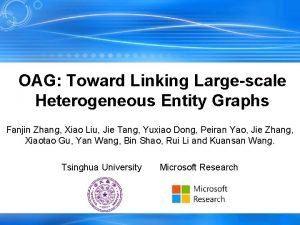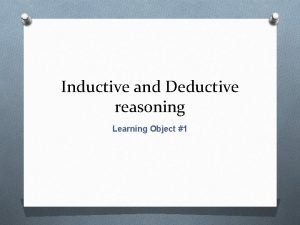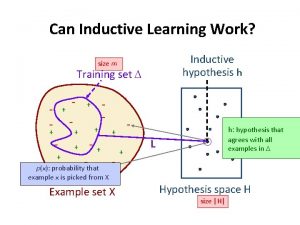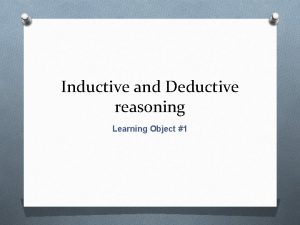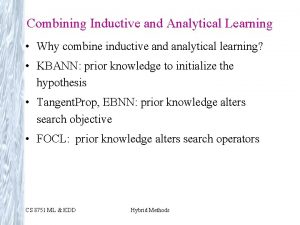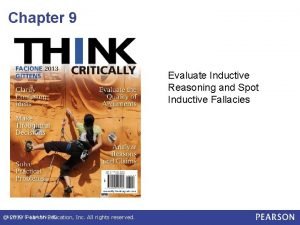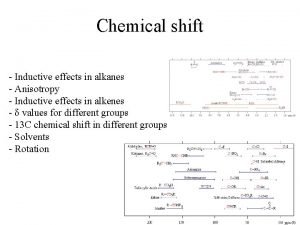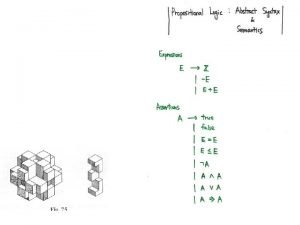Inductive Representation Learning on Large Graphs William L











- Slides: 11

Inductive Representation Learning on Large Graphs William L. Hamilton, Rex Ying, Jure Leskovec Keshav Balasubramanian

Outline �Main goal: generating node embeddings �Survey of past methods �GCNs �Graph. SAGE �Algorithm �Optimization and learning �Aggregators �Experiments and results �Conclusion

Node Embeddings �Fixed length vector representations of nodes in a graph (similar to word embeddings) �Can be used in downstream machine learning and graph mining tasks �Need to learn smaller dense embeddings from higher dimensional information

Methods �Non Deep Learning based models: Deep. Walk, node 2 vec �Biased random walk based approaches �Attempt to linearize a graph by viewing the results of the walks as sentences � Deep Learning models: Vanilla graph neural networks, GCNs �Neural Networks learn the representations

Graph Convolution Networks �Type of deep learning model that learns node representations �Two approaches: �Spectral – Involves operating in the spectral domain of the graph, specifically on the Laplacian and Adjacency matrix. �Spatial – Convolution is defined directly based on the spatial neighborhood of a node �Drawbacks of the spectral approach �Involves operating on entire Laplacian �Transductive, generalizes poorly to unseen nodes

Graph. SAGE � Spatial and inductive graph convolution network � Nodes learn from neighborhood in graph � A fixed size neighborhood is randomly sampled for each node

Algorithm �Graph. SAGE forward pass

Learning the parameters of the network �Supervised �Final embeddings are passed through a dense layer to get class probabilities �Eg: Labelling the nodes of a graph �End goal is labelling the node, not generating the embedding � Unsupervised �Use custom loss function that ensure “nearby” nodes have similar representations, “far away” nodes have dissimilar representations �Negative sample to ensure latter �Nearness defined by cooccurrence score on a fixed length random walk

Aggregators �Mean: �Pooling: �LSTM based aggregator

Experiments and Results

Conclusion �Proposed an inductive framework to learn node representations based on spatial graph convolutions
 Inductive representation learning on large graphs.
Inductive representation learning on large graphs. Deductive learning vs inductive learning
Deductive learning vs inductive learning Deductive learning vs inductive learning
Deductive learning vs inductive learning Examples of deductive reasoning
Examples of deductive reasoning Inductive vs analytical learning
Inductive vs analytical learning Inductive learning machine learning
Inductive learning machine learning State bugs in software testing
State bugs in software testing Graphs that compare distance and time are called
Graphs that compare distance and time are called Graphs that enlighten and graphs that deceive
Graphs that enlighten and graphs that deceive End behavior chart
End behavior chart Gephi tool
Gephi tool Oag: toward linking large-scale heterogeneous entity graphs
Oag: toward linking large-scale heterogeneous entity graphs
